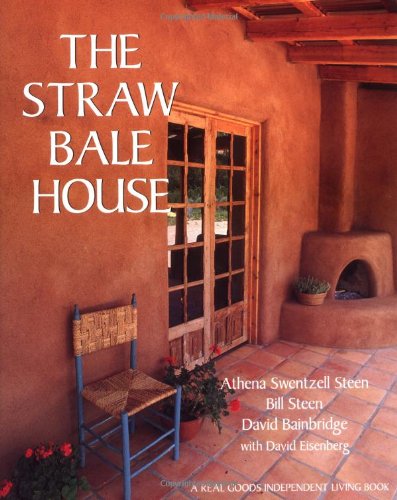





The Straw Bale House, 1994
Steen, Athena Swentzell, Bill Steen, and David Bainbridge. The Straw Bale House. 1 edition. 1994
Jonathan Hammond's Strawbale Artists Studio is featured in this publication on page. 8.

Birds Eye, Vol. 2, 1994
Japanese Language Journal

Architecture California, Vol. 6 1984
Jonathan Hammond, “People’s Republic of China: The Stone Flower Inn,” Architecture California Vol. 6 (1984) (now AIA’s arcCA): 24-26
"The Stone Flower Inn is a small solar heated hotel in southern China designed for an American company, the Chinamerica Corporation, which had a joint venture contract with the Chinese. While the project seemed totally unprecedented and unusual to me at first, I learned that it fits into an ongoing web of human relationships and traditions, dating back thousands of years, that finally brought me, an architect specializing in the design of solar buildings, together with local people in a rural community in the People’s Republic of China."

Solar Age Architecture: Six California Buildings, 1981
The Oakland Museum Natural Sciences Gallery, “Solar Architecture: The Basic Elements and the Six Solar Buildings,” Solar Age Architecture: Six California Buildings, March 10-June 28 1981
“A modest house in suburban Davis literally lifts its lid to the sun. Set into the flattened roof peak of the otherwise normal-looking house are a row of six 6 by 8-foot galvanized metal pans - roof ponds - sitting directly on the sturdy roof joists. Filled a foot deep with water, the asphalt-lined ponds absorb the sun’s heat all day in winder, assisted by the shiny undersurfaces of the raised insulation panels, which reflect additional sunlight down into the ponds.”

Solar Gain: Winners of the Passive Solar Design Competition, 1980
California Energy Commission Governor’s Office of Appropriate Technology, “Winning Designs: Award 1st Place,” Solar Gain: Winners of the Passive Solar Design Competition, February 1980
“The team of Jonathan Hammond and James Plumb of Winters designed this single-story three-bedroom home for Dinuba, twenty-five miles southeast of Fresno. Dinuba, in the Central Valley, experiences hot summers, often with several consecutive days’ temperatures in the 100s. The high cooling requirements of this climate are met by the “cool Pool” design, which needs no back up system for maintaining a comfortable indoor temperature.”

Research and Design: The Quarterly of the AIA Research Corporation, Vol. II, No. 3, 1979
Ed. Michael J. Holtz, “And Two By Living Systems,” Research and Design: The Quarterly of the AIA Research Corporation, Vol. II, No. 3 (Fall 1979) 13
“Another California design firm, Living Systems, headed by Jon Hammond, has also been at passive design’s leading edge for several years. Hammond’s work with roof-ponds and water-walls led to the design of the Suncatcher house in sacramento as a display home for Pacific Gas & Electric.”

Passive Solar State of the Art: Proceedings of the 2nd Annual Solar Conference, 1978
Jonathan Hammond, “Design for Innovations: The Suncatcher and the Cool Pool,” Passive Solar State of the Art: Proceedings of the 2nd Annual Solar Conference, March 16-18, 1978, University of Pennsylvania, Philadelphia, PA
“This paper describes the Suncatcher and the Cool Pool, and reports the results of the preliminary monitoring of them.”

Process Architecture No. 6: Solar Architecture, 1978
“Hunt Residence,” Process Architecture No. 6: Solar Architecture, (1978), 93-97
Japanese Language Publication

The Davis Enterprise, 1979
Lorie Hammond, “A Personal View of Rosalynn Carter’s Visit to Davis,” The Davis Enterprise, 1979
"Last Tuesday Rosalynn Carter came to Davis to commend that community on its unique progress on energy conservation… Following a private dinner with Davis City Council members and their wives, Mrs. Carter attended a Davis City Council meeting at which she presented her community Energy Conservation Awards. Jon Hammond received such an award, along with colleagues Marshall Hunt, Richard Cramer and L.W. Neubauer, for their work in developing the energy conservation code which has enabled Davis to reduce its per capita energy use 18 percent over the last five years."

Energy Conservation News, 1976
“Here Comes the Sun,” Energy Conservation News, January 23, 1976

















